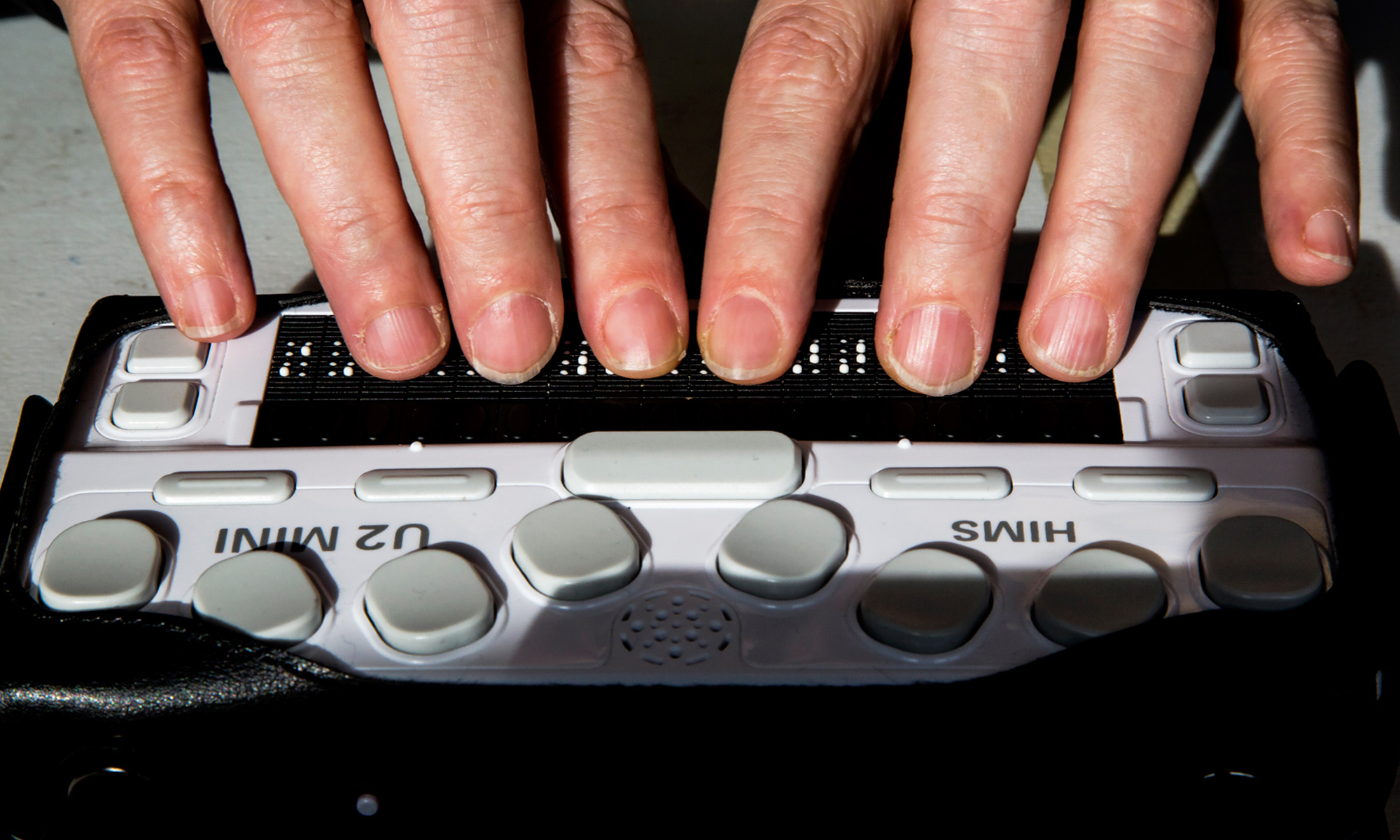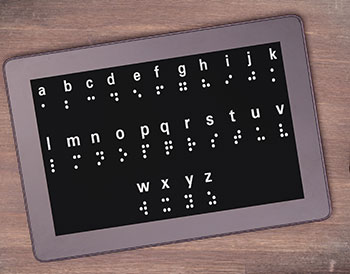Enhancing Lives With Advanced Assistive Gadgets for the Blind
The assimilation of advanced assistive gadgets for the blind is transforming how people experience their environments and communicate with their communities. What does this development indicate for the future of assistive technology and its duty in equipping people?
Review of Assistive Gadgets
Assistive devices for the blind include a diverse variety of innovations and tools designed to boost self-reliance and improve the quality of life for individuals with visual problems. These tools accommodate numerous demands, from navigating and wheelchair to interaction and day-to-day task management.
Among the primary categories of assistive gadgets includes wheelchair help, such as white walking sticks and overview canines, which help customers browse their surroundings safely. Digital traveling aids, geared up with sensors and audio feedback, likewise play a considerable function in wheelchair improvement.
In addition, tools that assist with daily living tasks, such as flexible kitchen area tools, Braille tags, and chatting watches, encourage individuals to carry out jobs separately. Interaction help, including screen readers and Braille displays, assist in accessibility to information and allow people to involve effectively with the electronic globe.
Additionally, low-tech services like magnifying glasses and large-print materials stay essential for several users. Jointly, these assistive tools serve not just as functional devices but additionally as vital enablers of freedom, promoting higher engagement in a globe that typically prioritizes sighted experiences. Their combination into daily life is important for promoting inclusivity and boosting total health for those with visual impairments.
Innovative Technologies being used
Development in technology has dramatically transformed the landscape of tools offered for individuals with aesthetic problems. Amongst one of the most noteworthy improvements are wise glasses integrated with enhanced fact, which supply real-time navigating support and item recognition. These tools leverage advanced cameras and expert system to deliver auditory cues, enhancing the individual's spatial understanding and autonomy.
In addition, mobile applications have become effective sources, making it possible for customers to determine money, reviewed message out loud, and navigate unknown atmospheres via spoken instructions. Devices such as Braille screens and refreshable Braille tools remain to progress, using seamless connectivity with computers and mobile phones, therefore improving interaction and access to details.
Wearable innovation, including smartwatches outfitted with voice-activated functions, additionally empowers individuals by assisting in quick access to alerts and alerts without needing aesthetic interaction. Responsive maps and 3D printing are additionally getting traction, using tangible depictions of rooms that aid in positioning and wheelchair training.
Jointly, these cutting-edge modern technologies not just enhance the day-to-day lives of aesthetically impaired individuals however likewise foster greater freedom, inclusivity, and interaction with the broader neighborhood, thereby improving perceptions of availability. (Screen readers for the blind)
Personal Stories of Empowerment
Empowerment commonly emerges from individual experiences that highlight the transformative impact of modern technology on people with aesthetic problems. Take, for circumstances, the story of Sarah, a young artist who reclaimed her interest for painting through the usage of a smart walking cane outfitted with challenge discovery. This tool not only promoted her wheelchair yet instilled a newly found confidence, permitting her to browse public areas independently and pursue her innovative endeavors.

These stories highlight the profound impacts that progressed assistive devices can have on every day life. By enabling people to get over obstacles, modern technology fosters a sense of autonomy and self-respect. Such empowerment tales function as a testimony to the capacity of advancement, highlighting exactly how the right devices can considerably improve lifestyle and open doors to new opportunities for those with visual disabilities.
Advantages of Advanced Solutions
Just how can advanced remedies essentially boost the lives of individuals with visual disabilities? The combination of innovative modern technology into assistive devices substantially changes daily experiences for those influenced by vision loss. These innovative services provide unprecedented autonomy, allowing customers to browse their click this link settings with confidence. Instruments such as wise walking canes outfitted with sensing units, navigation applications, and wearable technology are developed to supply real-time responses, improving click here now spatial awareness and reducing the risks associated with wheelchair.
Moreover, advanced assistive technologies foster social inclusion by helping with interaction and communication. Voice-activated gadgets and apps permit people to gain access to information and involve with their environments individually, breaking barriers that previously prevented their participation in instructional, expert, and social settings.
In addition, the personalization and versatility of these services cater to the diverse needs of users, therefore improving their total lifestyle. Boosted functionality, such as item acknowledgment and text-to-speech capacities, encourages individuals with aesthetic impairments to do jobs that they might have once discovered testing. Inevitably, progressed assistive innovations not just boost independence and safety but also promote dignity and self-worth, allowing customers to lead fulfilling lives.
Future Trends in Assistive Technology
As innovation continues to evolve, the landscape of assistive gadgets for the blind is positioned for remarkable advancements that will certainly additionally improve accessibility and independence. Emerging trends in assistive technology suggest a shift toward raised assimilation visit here of artificial intelligence (AI) and artificial intelligence, making it possible for devices to adjust to private user requires in real-time. These advancements are expected to facilitate even more intuitive navigation systems that can identify barriers and provide audio feedback, significantly improving exterior movement.
Additionally, the development of wearable technology, such as wise glasses outfitted with increased fact, will certainly permit users to get contextual details about their environments, therefore enriching their spatial recognition. In addition, advancements in haptic innovation guarantee to develop responsive feedback gadgets, allowing customers to view information through touch, improving learning and communication with their setting.
Telecommunication advancements are additionally leading the way for remote assistance services, where experienced experts can give assistance using video clip calls, making sure support is easily available. As these fads unfold, the future of assistive devices for the blind will definitely foster greater freedom, equipping individuals to navigate their globe with confidence and convenience.

Verdict
The combination of sophisticated assistive tools for the blind stands for a significant innovation in cultivating self-reliance and boosting lifestyle. By utilizing cutting-edge technologies, these gadgets empower users to navigate their environments with higher self-confidence and autonomy. As the area continues to advance, recurring r & d will likely produce also a lot more advanced remedies, additionally transforming the lived experiences of people with aesthetic impairments and promoting a higher feeling of inclusion within society.
The integration of sophisticated assistive tools for the blind is transforming exactly how individuals experience their environments and communicate with their areas. The integration of cutting-edge innovation into assistive gadgets significantly transforms day-to-day experiences for those impacted by vision loss.As innovation proceeds to evolve, the landscape of assistive devices for the blind is poised for exceptional developments that will certainly even more improve availability and freedom. Arising trends in assistive innovation show a change toward raised integration of man-made knowledge (AI) and device learning, enabling gadgets to adapt to private user needs in real-time.The combination of advanced assistive gadgets for the blind represents a considerable development in fostering freedom and enhancing top quality of life.
Comments on “AI-Powered Visual Aids: Transforming Support for the Blind”